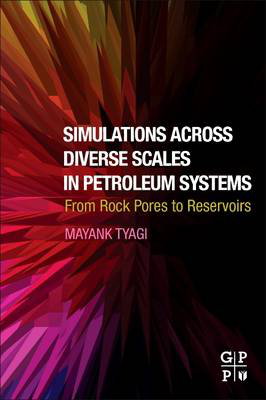
PublishedElsevier, September 2017 |
ISBN9780128051849 |
FormatSoftcover, 220 pages |
Dimensions22.9cm × 15.2cm |
Simulations Across Diverse Scales in Petroleum Systems: From Rock Pores to Reservoirs discusses the known limitations and potential solutions for the next generation multiscale simulation tools needed for engineers to make progress toward system-level multiscale approaches in solving oil and gas formation flows.
Researchers and engineers working in the oil and gas industries today are looking for more confidence in their numerical simulations to reliably forecast the lifespan of oil and gas entrapped in formations, estimate the cost of production and predict the associated risks involved in safely extracting oil and gas.
Currently, numerical approaches involve a lot of assumptions and have a large margin of error, and it is not possible to capture all the scales of geometry and physics in one single simulation. This book explains the progression of how to capture each scale of geometry and physics in numerical simulations, classifying oil and gas flow through porous formation into three scales: pore scale to capture microscopic effect when fluid is flowing through the gaps in rocks and fractures, near wellbore scale to capture intermediate range where multiphase flow through the porous zone is used to calculate viscous and inertial effects, and reservoir scale simulations to model miles-long domain using Darcy-type models.
The book helps oil and gas engineers understand all the tools available to model today's oil and gas applications. It features additional content on uncertainty quantification, coupling and multiscale information to help explain how to further integrate between the scales, as well as the outlook for the next-generation petroleum systems simulator.

